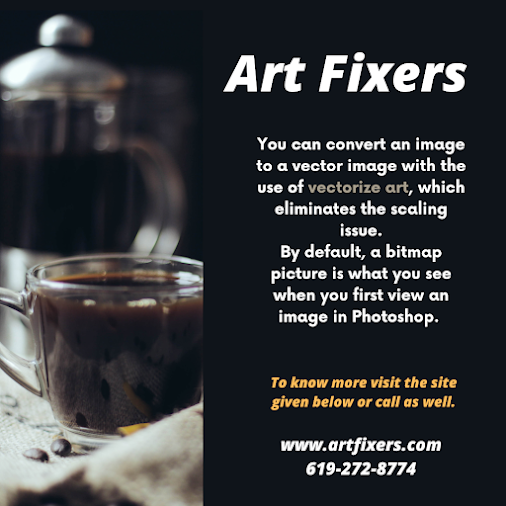With the help of vectorize art you can change an image to a vector image, and can negate this sizing problem. As soon as you open an image in Photoshop, by default it is a bitmap image. You cannot rescale bitmap images without compromising the overall quality of the image because these are resolution dependent.
Here are the easy steps to convert vector image in Photoshop:
1. Go to the window and click on the paths, then click it to see the related options, out of which you have three. Now use the customary Pen tool, which enables you to create Bezier curves and straight lines over an image.
2. If you want to follow the variations of brightness and color within an image choose the available Magnetic Pen.
3. The freeform option is available; if you like to obtain a more organic and open feeling drawing over which you can trace, you can go for this option. After selecting the tool, make your vector tracks over the image.
4. Then press Enter after you are done tracing the modifications of the shapes and paths over your image. When you are at the end of your pathway, this will notify the Photoshop.
5. To select extra pathways, select Magic Wand, Lasso and Marquee tools, then navigate to the paths dropdown and pick make work path to change your selected paths into vector paths.
6. Next, select the tolerance setting for your pathways. Lesser tolerance grade means that you want to leave little room for variations, whereas the higher settings enable for smoother shifts between anchor points alongside the pathway.
7. Ensure to double click the correct pathway description that displays right in the path dropdown or else you can consider the default description or rename each track.
8. Failure to do so will mean your vector drawings on the work path will be replaced as long as you continue to draw. So in any other program, you can use a newly vectorized images, export your vectorize art paths from Photoshop to Illustrator.
9. This can be done by clicking File→Export→Paths to Illustrator. You are now aware about how to convert a Photoshop image into a vector image. Visit our vector gallery at https://www.artfixers.com/ for already made vrctor.
10. If you wish to enlarge logos or blurry images for print or screen, vector conversion is the way you need to. Convert vector image conserves those fine details so you get large images with brittle, clean lines.
11. Correcting vector conversions needs time and patience. But it is not that you have to waste all that time finishing each vector in Photoshop yourself.
12. We regenerate the original image by hand with expertise; hence you can use your graphics anywhere like banners for your next trade show, t-shirts for your team, or even on a billboard.
13. Many of the photos are raster files in their original form, and have filenames that end with .jpg, .png, .gif, .pdf, or .psd. Raster files comprise a series of pixels, so they are good enough for using online in places like the website or online store.
For converting vector image, visit Art fixers.










